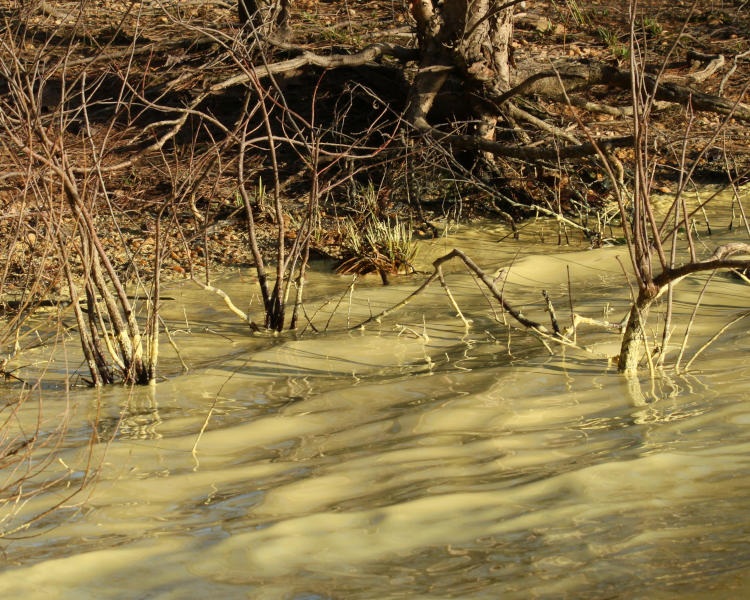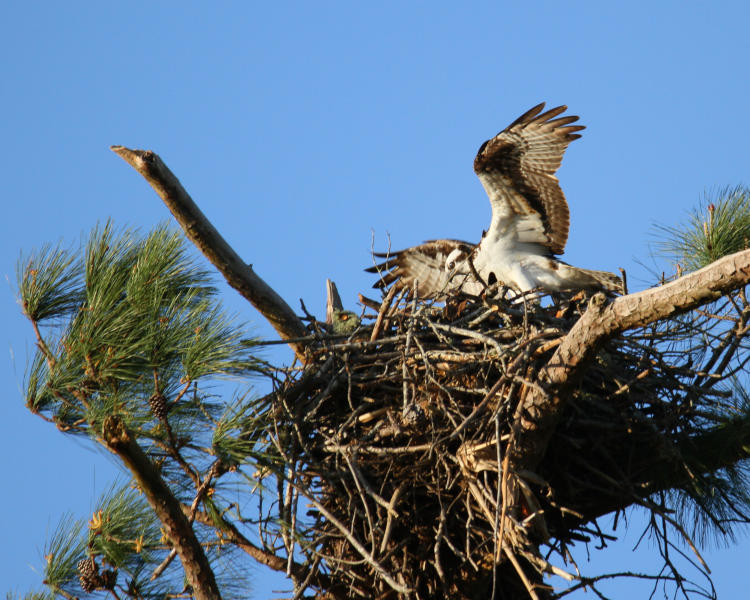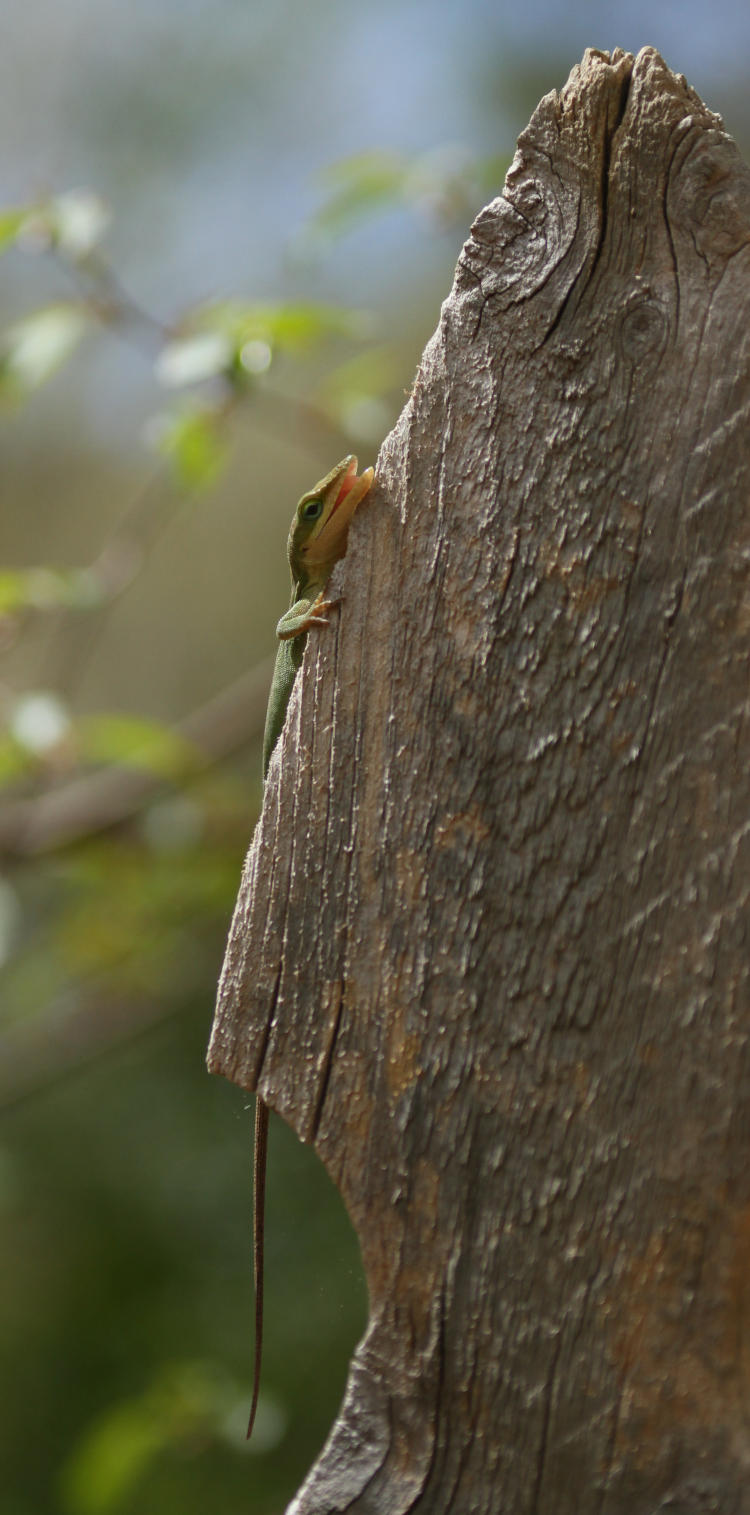I told you this was coming…
The Girlfriend and I did a brief trip to Jordan Lake a week back, just checking out conditions before it turned cold (again) – there really wasn’t much to see, and the light angle was wrong even if there had been, but I did a quick snap of the pine pollen turning the lake edge into something from a horror drama.

That’s not one of the mentioned subjects, it’s a bonus, like how products advertise “10% more!” than a measurement 10% less to try and sound generous without doing anything (or, you know, like everything from Apple.) Below is the intended content.
Since she hadn’t seen it, we did the minimal hike over to check on the osprey nest, which showed no activity at all even though, to my eye, it looked like it was active.

We watched it for a minute or so, hoping to see someone peek their head above the rim, and of course I shot a couple of frames for closer examination when back home. But I had lowered the camera (the lens gets heavy, okay?) when I suddenly spotted someone arriving, which happened quickly because the surrounding trees prevent a decent view of the skies further from the nest. I swung the camera up hurriedly and fired off a few frames as soon as I got the bird in the viewfinder, knowing that the autofocus probably hadn’t tracked well, but hoping anyway since I had a scant second.

As feared, it wasn’t sharp – this is full frame and it gets no better when cropped, but at least I snagged the arrival with a good talonful of nesting material.
Now, often enough with birds, it’s the male that builds the nest and uses it to convince the female that he’s a good mate choice, but there are variations and I’ve never confirmed this for osprey (Pandion haliaetus,) so I can’t assure you that this is the male – the plumage on this species provides no clues. This isn’t far from Walkabout Studios, but it’s not a quick jaunt either, so staking out the nest to watch for mating behavior isn’t a casual effort. Not to mention that this vantage is easily visible to the ospreys too, and may make them antsy, so brief visits are better, at least until I’m sure that eggs have been laid. But our construction foreavian went ahead and distributed their new material as we watched.

It flew off not too long afterward though, possibly because of our presence, more likely to keep working on the nest until sunset, maybe a little of both, but we took our cue and headed back. One down.
On the same warm day as the one daylight shot from the previous post, I also chased a Carolina anole (Anolis carolinensis) around Walkabout Estates, if by, ‘around,’ you mean, ‘among a handful of fenceposts not two meters apart,’ and it’s me saying it so I do.

Full confession: I only noticed it fleeing at my approach, having failed to spot it before then, but in my defense I wasn’t really looking either (I was actually watching for the reappearance of the racer, so the ground, not the fence.) But I remained motionless, knowing anoles, and sure enough it popped back into sight within a few seconds and resumed its basking location on the fence. I kept my movements slow and could get in pretty close before it started getting a little twitchy, whereupon I backed away just as slowly and let it enjoy the solar radiation. I was there to run the siphon hose anyway, so stepped outside the gate to do so. On returning, the anole was beginning to think it should be blending in better and had changed color – not too thoughtfully, given the substrate, but it’s likely instinctual anyway.

Color change in anoles is more linked to environment and mood rather than ‘camouflage,’ but if the mood change is between, ‘absorbing sunlight,’ and, ‘fleeing predation,’ the difference may be moot. There isn’t two minutes between these two frames, to give a faint idea of the timeline, though I’ve seen them change in mere seconds. That time, it was a faceoff in Florida between a Carolina anole like here, and the brown anole that’s crowding them out in that region. Both of them were doing their territorial signalling with the underchin dewlap, neither giving an inch, but then the Carolina changed from bright green to dark brown within two seconds, which prompted the brown anole (that’s actually the species name, Anolis sagrei,) to launch itself at the Carolina and start a mad chase around the tree. Curiously, the territorial coloration seem to be different, so what exactly the Carolina anole said with this change to dark brown, I couldn’t tell you.
But my subject here had decided I wasn’t quite what it wanted to see so close. Deciding to vacate its basking spot, it slipped up the backside of the fence posts, frequently peeking out to check if I had gone.

While this might be construed as commentary, I’m pretty sure my model had just consumed an ant while slinking up the fencepost, and was working it down – far be it from me to interrupt a meal. I even readied myself for video in case it spotted more ants, something that I want to capture on film, but it was not to be that day. There is little to no warning of it happening anyway – I know, because I’ve seen it a handful of times – and for something the size of ants it takes only a fraction of a second. Something like a moth, more of a mouthful, may take some effort to scarf down and present more opportunity, but I still have to be ready when it happens. Maybe someday soon I’ll do a stalking session with a longer lens, see what happens.
That catches me up, though there’s a student outing tomorrow so we’ll see what that might produce.




















































